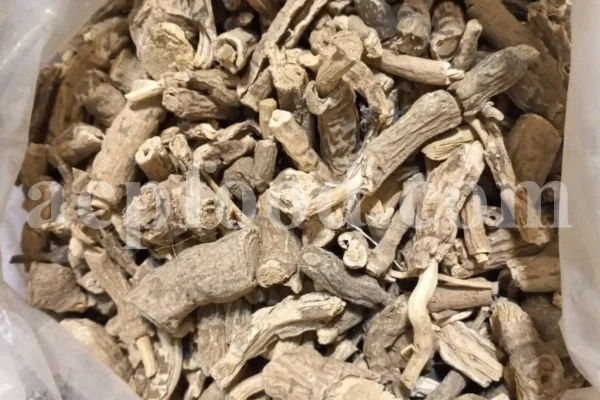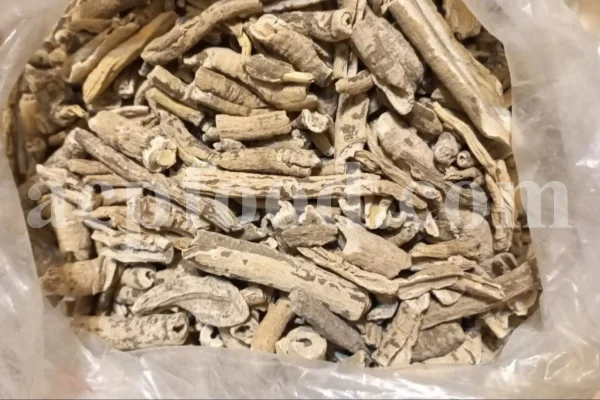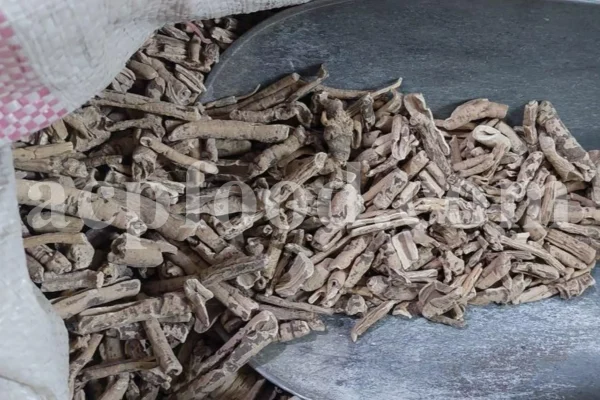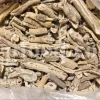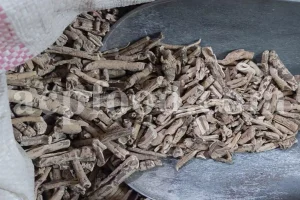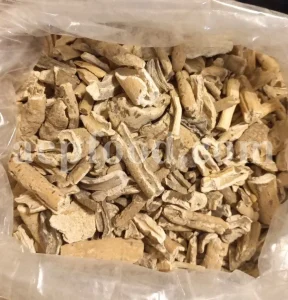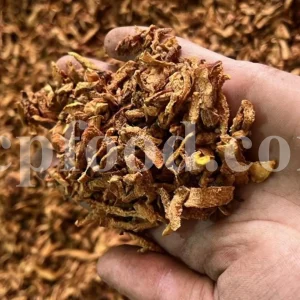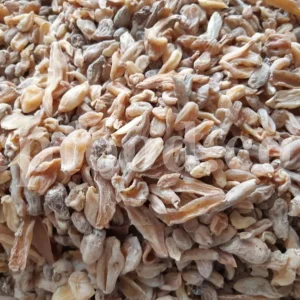Scientific Names: Operculina turpethum (L.) Silva Manso
Synonyms: Convolvulus turpethum L.
English Name: Turpeth Root
Other Names in English (UK, USA, Canada, South Africa, Australia, New Zealand): Turbith, Indian Jalap, St. Thomas Lidpod, Transparent Wood-Rose
Family: Convolvulaceae
GENERAL DATA
Plant Parts: Root
Cultivation mode: Wild Collection
In manufacturing: Pharmaceutical
In food: –
🌿 Industries That Use Turpeth Root (Operculina turpethum L.)
Here is the professional breakdown for Turpeth Root from Operculina turpethum (also known as Indian Jalap, Trivrit, or Nishoth):
🌱 What Is Turpeth Root?
Turpeth Root, derived from Operculina turpethum, is a powerful medicinal root used primarily in Ayurvedic, Unani, and traditional herbal systems. It is recognized for its strong purgative (laxative) and detoxifying properties. The plant belongs to the morning glory family (Convolvulaceae) and thrives in tropical Asia and the Middle East.
The root contains resins, turpethin, glycosides, and flavonoids, which make it valuable for applications in gastrointestinal support, detox protocols, and liver-cleansing formulas.
1. Pharmaceutical & Traditional Medicine Industry
Turpeth root is classified as a major herbal purgative in Ayurveda and used for detoxification, constipation, inflammation, and edema.
Applications:
-
Purgative action: used for chronic or stubborn constipation
-
Hepatic detox: supports liver and gallbladder function
-
Anti-inflammatory: used in arthritis, skin disease, and gout
-
Kapha and Pitta disorders: clears excess mucus, bile, or toxins
✅ Administered as powder (Churna), decoction, or part of classical formulations
✅ Key ingredient in Trivrit Lehyam, Avipattikar Churna, and other Ayurvedic compounds
2. Nutraceutical & Detox Supplement Industry
Turpeth root is featured in cleansing and detox regimens, especially for gut and liver health.
Uses:
-
Colon-cleansing capsules or powders
-
Formulated in herbal detox teas
-
Added to digestive and laxative blends
-
Combined with Senna, Triphala, or Aloe resin in nutraceuticals
✅ Often labeled as part of “natural cleanse” or “herbal detox” programs
3. Cosmetic & Dermatological Industry
Due to its detoxifying and blood-purifying effects, Turpeth root is sometimes used in Ayurvedic skincare preparations.
Applications:
-
Included in herbal pastes for eczema, acne, and skin inflammation
-
Internal use aids in clearing skin through liver detox
-
Applied in traditional skin detox oils or lepas (herbal masks)
✅ Sometimes combined with Neem, Turmeric, or Manjistha
4. Veterinary & Traditional Animal Medicine
Turpeth root is used in folk veterinary care for its strong purgative and anti-parasitic actions.
Veterinary uses:
-
Given to livestock for worm expulsion
-
Occasionally used for bowel cleansing in large animals
-
Requires careful dosing due to strong action
✅ Trusted in Ayurvedic animal husbandry systems
5. Ethnic, Organic & Export Markets
Turpeth root is widely traded in Indian, Persian, and Southeast Asian traditional herb markets, both raw and processed.
Exported as:
-
Whole dried roots or root powder
-
Processed capsules or extracts
-
Included in Ayurvedic compound formulas for detox or digestion
✅ Sourced mostly from India, Iran, and Sri Lanka
6. Academic & Herbal Pharmacology Research
Turpeth root has been studied for its bioactive resin (turpethin) and antimicrobial, purgative, and hepatoprotective properties.
Focus areas:
-
Liver function and bile flow regulation
-
Gastrointestinal motility and purgation
-
Antimicrobial and antioxidant activity
-
Comparative studies with Senna, Aloe, and Jalap
✅ Considered a model plant for resin-based herbal purgatives
✅ Summary of Key Applications
| Industry | Common Uses |
|---|---|
| Pharmaceutical & Traditional | Strong herbal laxative, detoxifier, liver support |
| Nutraceutical & Detox | Colon cleanse capsules, detox teas, purgative formulas |
| Cosmetic & Dermatology | Skin detox, herbal acne masks, blood purifiers |
| Veterinary & Livestock | Worm expulsion, bowel relief in animals |
| Ethnic & Export Markets | Bulk root powder, Ayurvedic classical blends |
| Scientific Research | Hepatoprotective, purgative, anti-inflammatory effects |
🌟 Key Features
-
Contains turpethin, a powerful resin with purgative action
-
Traditional Ayurvedic and Unani detox root
-
Targets constipation, skin disorders, liver congestion, and worms
-
Considered a plant-based alternative to harsh chemical laxatives
-
Requires professional guidance for correct dosage due to potency
PRODUCT NAME IN DIFFERENT LANGUAGES
Persian Name: تربد/ Torbod
German Name (Deutschland, Austria, Switzerland): –
French Name (France, Belgium, Switzerland, Quebec): Jalap
HARVEST CALENDAR
Feb
Mar
Apr
May
Jun
Jul
Aug
Sep
Oct
Nov
Dec
To order Turpeth root, please contact us.
The root is cylindrical, light, hollow, slightly tangled and has an uneven surface. It has dark skin and white inside. Inside the root of some of its species are black and some are yellow. Numerous small holes can be seen in its cross section, which are filled with a resinous substance in the form of small yellow droplets, which is the laxative substance. The root is tasteless at first. But a few moments after tasting, it turns to a nauseating taste.
The best root has a soft surface, it is easily powdered, it tastes a little spicy, it is not worm-eaten, it is fresh, white, hollow, and has resin inside.
Turpeth Root Temperament
Third degree of hot, third degree of dry
Operculina Turpethum Chemical Constituents
glucoside tupethine, jalapin, turpethene, jalapic acid, ipomoeic acid, tampicolic acid, valerianic acid
Turpeth Root Health Benefits
Indian Jalap root expels diluted moisture. The cortex of the roots expels phlegm and yellow bile from the body.
Turbith root is useful for paralysis, joint pain, neurological diseases, sciatica, cough caused by stomach moisture, ascites, asthma, and muscle diseases.
Eating it with Ginger removes thick and viscous phlegm from the depths of the body, dilutes it and expels it. Transparent Wood-Rose root purifies the brain, stomach, and uterus from phlegm, unlocking them.
Eating Indian Jalap root with Sweet Almond oil and Flaxseeds, improve chronic cough and chest pain.
Eating it with Myrobalan (Terminalia Chebula) purifies the brain, and cures melancholy, maniac, and epilepsy.
Turpeth Root Dose
Alone up to 7 grams
Along with other decoctions up to 12.5 grams
Turpeth Root Side Effects
Intestine. Causes dryness in the body organs, nausea, and sadness. Harmful to hot temperaments and people with hot hearts.
Black Turbith root is very toxic and causes severe diarrhea, anesthesia, dizziness, hoarseness and burning abdominal.
Yellow Turbith root is also somewhat toxic.
Turpeth Root Modifiers
First, scrape the black cortex of Turpeth. Then mix it with a little sweet Almond oil or Pistachio oil and eat it with Gum Tragacanth.
Cold water shouldn’t be drunk after eating this root. Because it reduces the effect.
Eating it with Ginger strengthens its effects.
If someone is poisoned with black one, give them milk and Almond milk to make them vomit.
To order Turpeth root, please contact us.

